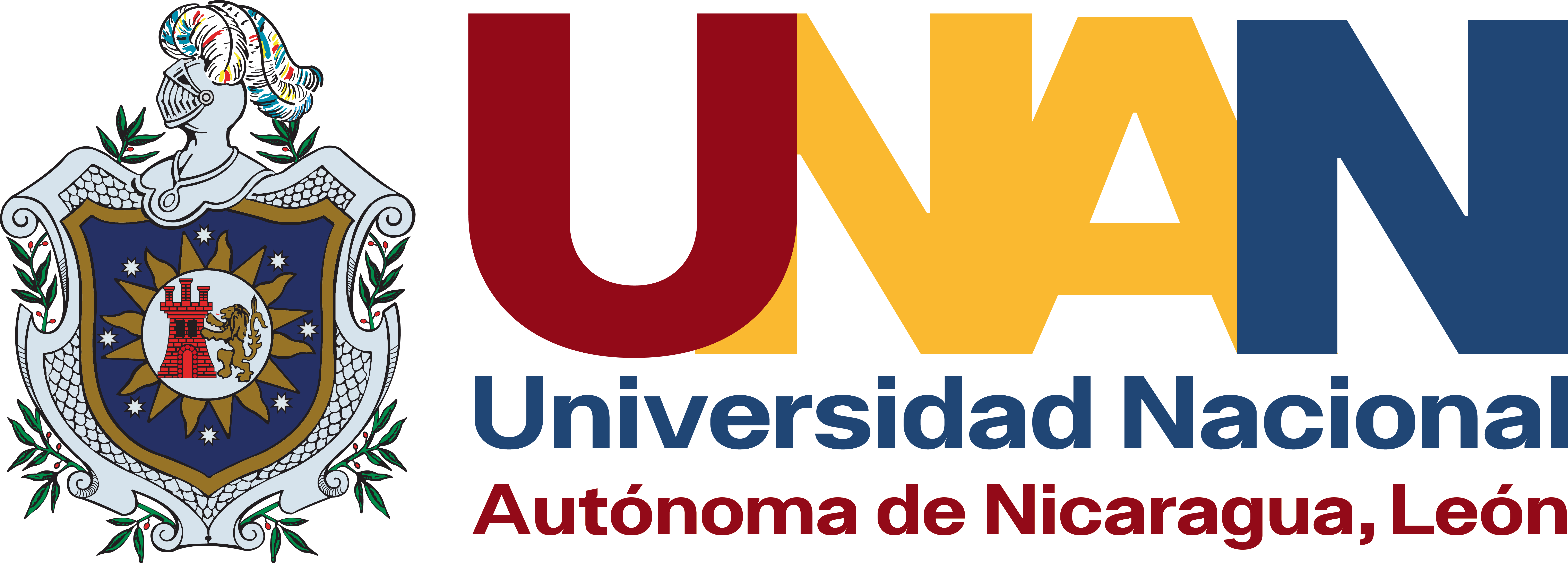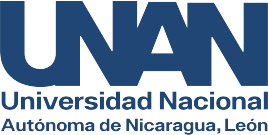Effect of Propolis and Apitoxin from Honey Bee (Apis mellifera scutellata) on the wound healing process in animals
DOI:
https://doi.org/10.5377/universitas.v15i2.18850Keywords:
apitoxin, healing, wound, hamster propolis.Abstract
Propolis and apitoxin are natural substances produced by bees, they have bactericidal and regenerative properties, they do not generate bacterial resistance. These substances contain peptides and flavonoids that promote the epithelial regeneration process by stimulating the events that participate in the healing process. In the present study, the effectiveness of Propolis Ethyl Extract (EEP) and honey bee Apitoxin (Apis mellifera scutellata) in hamsters was determined, as a natural alternative treatment in the wound healing process. The groups were made up of 5 hamsters, group 1 and 2 (control, Physiological Saline Solution), group 3 (EEP at 10%), group 4 (EEP at 20%), group 5 (EEP at 30%), group 6 ( apitoxin), group 7 (aloe vero) and group 8 (ointment). A one-centimeter ovoid incision was made on each specimen with a sterile scalpel, under anesthesia and with prior disinfection of the area. Daily wound measurements were taken on each hamster and the complete healing process was observed for 16 days. The post hoc Games-Howells test was applied for multiple comparisons, where no significant statistical differences were found between the propolis treatments. When performing the Mann Whitney U statistical test, it was determined that there is a statistically significant difference for the treatments (Apitoxina, Aloe vera and Ointment), corresponding to the size of the wound between the treatments, with a significance value of P < 0.017, having Apitoxin, a better effect on the wound healing process.
Downloads
References
Amin, M.A., Adbel-Raheem, I.T.(2013). Cicatrización acelerada de heridas y efectos anti-inflamarios del hidrogel de quitosano-
alcohol polivinílico físicamente reticulado que contiene veneno de abeja melífera en ratas diabéticas. Arch.Pharm. Res. 37,1016(2014).https://doi.org/10.1007/s12272-013-0308-y
Corrales Freire, G. A. (2015). Utilización de un geloidea base de superficial apitoxina en el tratamiento de dermatitis bacteriana localizada, en perros domésticos, en la clínica veterinaria “Dino sur” del Distrito Metropolitano de Quito [bachelorThesis, LATACUNGA / UTC / 2015]. http://localhost/handle/27000/2814
Benavides-Wolmers, S.L., Rivas-Ortiz, M.S., Oviedo-Zelaya, R., Brizuela-Hernández, P.M. & Ruano-Iraheta, C.E. (2018), Efecto de extracto etílico de propóleo de abeja melifera (Apis mellifera scutellata) como alternativa natural en el proceso de cicatrización
de heridas en cabras raza saanen. Guatemala. Agrociencias. ISSN 2522-6509, Año I, No 6
El Adham, E. K., Hassan, A. I., & A. Dawoud, M. M. (2022). RETRACTED ARTICLE: Evaluating the role of propolis and bee venom
on the oxidative stress induced by gamma rays in rats. Scientific Reports, 12(1), 2656. https://doi.org/10.1038/s41598-022-05979-1
Figueroa LA. (2013) Efecto del extracto blando de propóleos en pomada en la castración escrotal de lechones, Rio Hondo, Zacapa[Internet] [other]. Universidad de San Carlos de Guatemala; 2013 [cited 2023 Feb 8]. Availablefrom: http://www.repositorio.usac.edu.gt/12436/
González M. L. (2003). Evaluación del Propóleo de Abejas (Apis Melífera), Como Cicatrizante y Antiinflamatorio en la castracion de lechone .http//www.repositorio.usac.edu.gt/5686/1/Tesis%20Med.%20Vet.%20Mónica%20 González%20Nicholson.pdf
Guaraca Merchán, A. L., & Palomino Calderón, D. L. (2018). Estudio de la composición química y actividad antibacteriana de muestras
de propóleos de diferente localización geográfica [masterThesis]. http://dspace.ups.edu.ec/handle/123456789/15371
Isidorov, V., Zalewski, A., Zambrowski, G., & Swiecicka, I. (2023). Chemical Composition and Antimicrobial Properties of Honey
Bee Venom. Molecules, 28(10), 4135. https://doi.org/10.3390/molecules28104135
Jongjitaree, S., Koontongkaew, S., Niyomtham, N., Yingyongnarongkul, B., & Utispan, K. (2022). The Oral Wound Healing Potential ofThai
Propolis Based on Its Antioxidant Activity and Stimulation of Oral Fibroblast Migration and Proliferation. Evidence-based
Complementary and Alternative Medicine : eCAM, 2022, 3503164. https://doi.org/10.1155/2022/3503164
Korani, S., Khalesi, N., Korani, M., Jamialahmadi, T., & Sahebkar, A. (2024). Applications of honeybee-derived products in bone
tissue engineering. Bone Reports, 20, 101740. https://doi.org/10.1016/j.bonr.2024.101740
Maack T. R. (2020). Evaluación de inmunoglobulinas (G y M) en el tratamiento de piodermas en perros domésticos (canis lupus
familiaris) mediante el uso de Apitoxina natural. Latacunga, Ecuador. http://repositorio.utc.edu.ec/handle/27000/6723
Oryan, A., Alemzadeh, E., & Moshiri, A. (2018). Potential role of propolis in wound healing: Biological properties and therapeutic
activities. Biomedicine & Pharmacotherapy, 98, 469-483. https://doi.org/10.1016/j.biopha.2017.12.069.
Orellana Barzanallana, Héctor Raúl (2003). Comparación clínica e histológica de dos tratamientos: miel y propoleo en heridas que
cicatrizan por segunda intención en perros. Licenciatura thesis, Universidad de San Carlos de Guatemala.
Padrón González, A. A., Naranjo Domínguez, A. A., Javier Díaz, J., & Llera Almenteros, R. E. (2012). El propóleo una alternativa de todos
los tiempos. Universidad Médica Pinareña, 8(1), 3.
Pelaez Alvarez, Elfego Estuardo (2001). Evaluación del propoleo de abejas (Apis mellifera) en la cicatrización de heridas en conejos. Licenciatura thesis, Universidad de San Carlos de Guatemala. http://www.repositorio.usac.edu.gt/id/eprint/5517
Sangmi Han, Yeoju Hong, Hong Inpyo, Parque Kwan Gyu, Kyung Hyun Kim, Wooram Lee, Hyunjin Ahn, Jeongyeon Kim, Sangmi Han,
(2015). Pharmaceutical composition comprising bee venom, melittin or apamin for prevention or treatment of kidney disease
(PatentKR20150137314A).https://patents.google.com/patent/KR20150137314A/en
Sang Mi Hana, KwangGill Lee, Joo Hong Yeo, kimwontae y P. KwanKyu. (2010). Efectos biológicos del tratamiento de una herida en lapiel de un animal con veneno de abeja (Apis melifera. L). Elsevier.
Sehn, E., Hernandes, L., Franco, S. L., Gonçalves, C. C. M., & Baesso, M. L. (2009). Dynamics of reepithelialisation and penetrationrate of
abee propolis formulation during cutaneous wounds healing. Analytica Chimica Acta, 635(1), 115-120.https://doi.org/10.1016/j.aca.2009.01.019
Velasquez Espinosa, Manuel Alberto (2018). Valoración clínica del tiempo y proceso de cicatrización de heridas experimentales tras la aplicación tópica de miel de abejas y propóleos en Cobayos. Trabajo de titulación previo a la obtención del Título de Médico Veterinario y Zootecnista. Carrera de Medicina Veterinaria y Zootecnia. Quito: UCE. 64 p.
Wallace, H. A., Basehore, B. M., & Zito, P. M. (2024). Wound Healing Phases. En StatPearls. StatPearls Publishing. http://www.ncbi.nlm.nih.gov/books/NBK470443/
Yang, J., Pi, A., Yan, L., Li, J., Nan, S., Zhang, J., & Hao, Y. (2022). Research Progress on Therapeutic Effect and Mechanism of Propolis
on Wound Healing. Evidence-Based Complementary and Alternative Medicine, 2022(1), 5798941. https://doi.org/10.1155/2022/5798941
Downloads
Published
How to Cite
Issue
Section
License
Copyright (c) 2023 National Autonomous University of Nicaragua, León.

This work is licensed under a Creative Commons Attribution-NonCommercial-ShareAlike 4.0 International License.
Copyright © 2025 Universitas (León), Revista Cientifíca de la UNAN-León. Academic Direction. Research Department. Publication and Scientific Event Unit.










